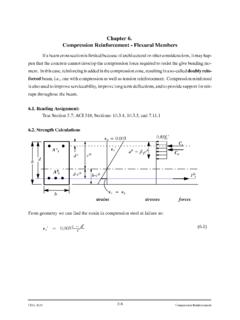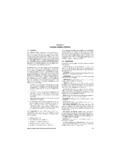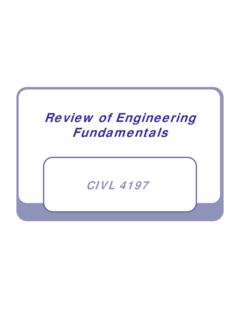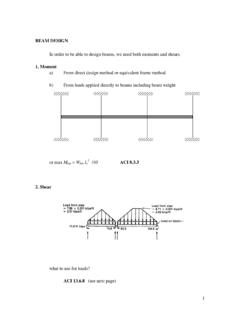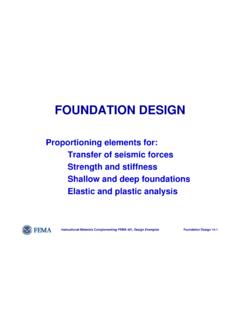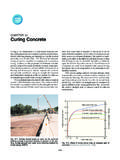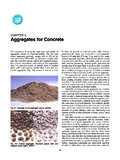Transcription of Chapter 3 Development of Site-Specific Response Spectra ...
1 EM 1110-2-6050. 30 Jun 99. Chapter 3. Development of Site-Specific Response Spectra for seismic analysis of concrete hydraulic Structures section I. Introduction 3-1. Purpose and Scope This Chapter describes procedures for developing Site-Specific Response Spectra of ground motions throughout the United States for seismic analyses of hydraulic structures. Also covered, but in less detail, are approaches for developing acceleration time-histories of ground motions. section I provides an over- view of the general approaches to developing Site-Specific Response Spectra , a brief discussion of factors influencing earthquake ground motions, and a brief discussion of differences in ground motion charac- teristics in different regions of the United States. This is followed in Sections II and III by descriptions of procedures for developing Site-Specific Response Spectra using deterministic and probabilistic approaches, respectively.
2 3-2. General Approaches for Developing Site-Specific Response Spectra The two general approaches for developing Site-Specific Response Spectra are the deterministic and probabilistic approaches. a. Deterministic approach. (1) General. In this approach, often termed a deterministic seismic hazard analysis , or DSHA, site ground motions are deterministically estimated for a specific, selected earthquake, that is, an earthquake of a certain size on a specific seismic source occurring at a certain distance from the site. The earthquake size may be characterized by magnitude or by epicentral intensity. In the WUS, the practice has been to use magnitude, whereas in the EUS, both magnitude and Modified Mercalli Intensity (MMI) have been used. However, in the EUS, magnitude is increasingly being used as the measure of earthquake size, and ground motions are correspondingly being estimated using correlations with magnitude.
3 In this manual, ground motions are estimated using relationships with magnitude. For procedures for estimating ground motions as a function of intensity, reference should be made to the state-of-the-art publication by Krinitzsky and Chang (1987). (2) Size and location of design earthquakes. In the deterministic approach, earthquake magnitude is typically selected to be the magnitude of the largest earthquake judged to be capable of occurring on the seismic source, , MCE. The selected earthquake is usually assumed to occur on the portion of the seismic source that is closest to the site (an exception is the random earthquake analysis described in section II and Appendix D). After the earthquake magnitude and distance are selected, the site ground motions are then estimated using ground motion attenuation relationships or other techniques.
4 Procedures for deterministically estimating earthquake ground motions are described in section II. b. Probabilistic approach. In the probabilistic approach, often termed a probabilistic seismic hazard analysis , or PSHA, site ground motions are estimated for selected values of the probability of ground motion exceedance in a design time period or for selected values of annual frequency or return period for ground motion exceedance. As an example, ground motions could be estimated for a 10. 3-1. EM 1110-2-6050. 30 Jun 99. percent probability of exceedance in 100 years or for a return period of 950 years. The probabilistic approach thus provides an expression of potential earthquake loading in terms analogous to those used for other environmental loads in civil engineering design such as wind and flood loading.
5 A probabilistic ground motion assessment incorporates the frequency of occurrence of earthquakes of different magnitudes on the seismic sources, the uncertainty of the earthquake locations on the sources, and the ground motion attenuation including its uncertainty. section III describes the procedures for probabilistically estimating earthquake ground motions. 3-3. Factors Affecting Earthquake Ground Motions a. General. As stated in paragraph 1-8, It has been well-recognized that earthquake ground motions are affected by earthquake source conditions, source- to-site transmission path properties, and site condi- tions. The source conditions include the stress drop, source depth, size of the rupture area, slip distribution (amount and distribution of static displacement on the fault plane), rise time (time for the fault slip to complete at a given point on the fault plane), type of faulting, and rupture directivity.
6 The transmission path properties include the crustal structure and the shear-wave velocity and damping characteristics of the crustal rock. The site conditions include the rock properties beneath the site to depths of up to about 2 km, the local soil conditions at the site to depths of up to several hundred feet, and the topography of the site. In developing relationships for estimating ground motions, the effects of source, path, and site have been commonly represented in a simplified manner by earthquake magnitude, source-to-site distance, and local subsurface conditions. The important influences of these factors on ground motion are summarized below. b. Effects of earthquake magnitude and distance on ground motions. (1) General. The effects of earthquake magnitude and distance on the amplitude of ground motions are well known; ground motion amplitudes tend to increase with increasing magnitude and decreasing distance.
7 However, the effects of magnitude and source-to-site distance on relative frequency content ( Response spectral shape) and duration of ground motions are not as well known and therefore are briefly reviewed below. (2) Effects of magnitude. The Guerrero, Mexico, accelerograph array data illustrate the large effect of magnitude on the relative frequency content and duration of earthquake ground motions. The Guerrero array has provided recordings of rock motions over a wide range of magnitudes. Figures 3-1. and 3-2 show the accelerograms and the corresponding Response Spectra for six recordings selected by Anderson and Quaas (1988) to be approximately equally spaced in magnitude from the smallest event of magnitude to the largest of magnitude Figure 3-1 illustrates the effect of magnitude on the duration of the strong shaking part of an accelerogram; with increasing magnitude, duration rapidly increases.
8 All events have epicenters about 25 km from the station, and all stations are on hard rock (Anderson and Quaas 1988). Figure 3-2 illustrates that the larger magnitude events have somewhat larger spectral amplitudes at high frequencies and much larger spectral amplitudes at long periods. In other words, increasing magnitude results in greatly enriched relative frequency content (higher spectral shapes) at long periods. Figure 3-3 illustrates a generalization of the effect of magnitude on Response spectral shape, in this case, from the empirically based attenuation relationships for rock developed by Sadigh et al. (1993). (3) Effects of distance. Data from the Loma Prieta earthquake of October 17, 1989, provide an example of the effect of distance on Response spectral shape. Figure 3-4 shows that the spectral shape of the recordings obtained on rock during this earthquake reduce in the high-frequency range and increase in the long-period range with increasing distance.
9 A generalization of the effect of distance on spectral 3-2. EM 1110-2-6050. 30 Jun 99. Figure 3-1. An example of accelerograms recorded in 1985 and 1986 on the Guerrero accelerograph array (Anderson and Quaas (1988), courtesy of Earthquake Engineering Research Institute, Oakland, CA). shape, in this case from the theoretically based relationships for rock of Silva and Green (1989), is illustrated in Figure 3-5. In general, within source-to-site distances of about 50 km, the effect of distance on spectral shape is much smaller than the effect of magnitude. Similarly, although the relative duration of the strong shaking part of an accelerogram tends to increase with increasing distance ( , Dobry, Idriss, and Ng 1978), this effect appears to be relatively small within 50 km of an earthquake source. (4) Special effects of near-source earthquakes.
10 Near the earthquake source (within approximately 10 to 15 km of the source), earthquake ground motions often contain a high-energy pulse of medium-to- long-period ground motion (at periods in the range of approximately to 5 sec) that occurs when fault 3-3. EM 1110-2-6050. 30 Jun 99. Figure 3-2. Response Spectra (5 percent damped, pseudo-relative velocity). corresponding to the acceleration traces in Figure 3-1 (Anderson and Quaas (1988), courtesy of Earthquake Engineering Research Institute, Oakland, CA). rupture propagates toward a site. It has also been found that these pulses exhibit a strong directionality, with the component of motion perpendicular (normal) to the strike of the fault being larger than the component parallel to the strike (see, for example, Sadigh et al. 1993; Somerville and Graves 1993.)

